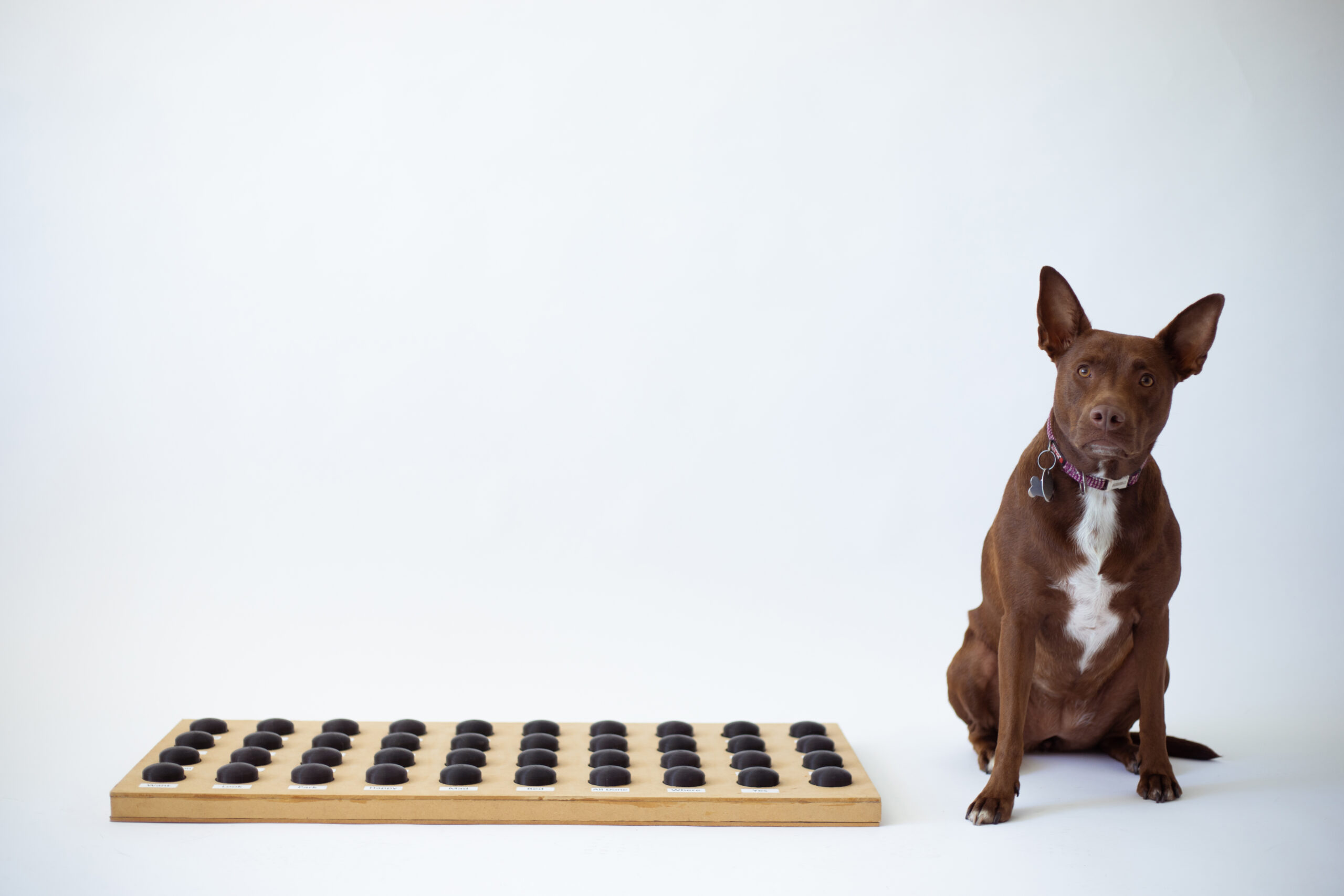One of the questions I’m asked most frequently is whether or not older dogs can learn to talk. Can older dogs learn to use words, or do they have to be taught as puppies? If you have an older dog, I’m sure you’ve wondered what she’s thinking or what she’s trying to tell you when she’s whining or barking. I have some good news for you: dogs of all ages can learn to talk, and introducing button communication to your older dog can give them access to say the words they’ve been hearing and understanding for their entire lives!
Before we dive into how to teach older dogs to talk, I want to point out that research consistently shows that dogs continue learning throughout their lifespan. The cliche “You can’t teach an old dog new tricks” is not true and grossly underestimates what dogs are capable of.
Here’s what you need to know about teaching your older dog to talk:
Choose words your dog already understands
Unlike the puppy phase, your older dog already has words that she understands and that you know she understands. Are there words you need to spell out when talking about, words that make your dog wiggle with excitement, or words that wake them up from a nap? These are the words you should start with! Make a list of words your dog reacts to. Now, whenever you say that word, use your dog’s button for it too.
Use your dog’s communication patterns to your advantage
Dogs communicate in many different ways. Their body language, tail wags, barks, and whines all have meaning. If you’ve lived with your dog for a long time, you likely already know what certain actions or sounds mean. Use this to your advantage!
For example, if you know your dog paws at the door every time she wants to go for a walk, model the word “walk” when you see her do this. You are pairing a word to her nonverbal communication. This is what we do with teaching babies and toddlers to talk too. When a baby waves, we say “hi.” We don’t even realize it, but we’re modeling the next level of communication by attaching a word to their gesture.
Your dog has depended on you for years
If you have an older dog, they have likely spent the majority of their life depending on you or another human for their instructions and routines. They probably haven’t had a whole lot of say in what they do each day. Teaching an older dog to use words can be an adjustment because this is the first time in their lives that they’ve had the ability to say words first instead of waiting for you to say a favorite word.
Understanding words and knowing how to use them are completely different skills. Be mindful of this adjustment period as you’re teaching. You can support your dog by giving a lot of silent wait time after you model a word, encouraging any exploration of the buttons, and following their lead. If they say something unexpected, respond as if it were intentional. The more you respond, the more your dog will learn the power of using each word.
Older dogs have longer attention spans
Unlike puppies, older dogs do have longer attention spans. This means you can spend longer modeling a word or phrase and waiting to see if they will initiate communication. Older dogs will often spend a longer time on activities too. This gives you more opportunities to model language consistently.
You don’t know all of your dog’s thoughts and needs
When I worked with children with special needs as a speech-language pathologist, a lot of parents would tell me that their child didn’t need a communication device because the parent already knew everything the child needed or wanted. This was always really tough for me to hear. Yes, we can understand a lot about a person or a dog through their other forms of communication. But, nothing replaces the ability to independently express our thoughts and feelings to anyone, and be understood when we say them. I have made assumptions about what Stella wants or is thinking based on her nonverbal communication and have been wrong PLENTY of times.
There is also so much more to communication than only saying what we want. Stella comments on what’s happening in her environment, asks questions, answers questions, expresses feelings, says exactly where she wants to go or who she wants to see, and more. Words are the only way we can achieve this level of specificity and understanding. Stay open to the fact that your dog is thinking WAY more than you realize.
If you’re ready to teach your older dog how to talk, get started with the Talking Pet Starter Set. The Starter Set comes with four recordable buttons and a guide that helps you identify your dog’s current communication patterns and choose which words to program.
To read about how I taught Stella to say words from puppy to adulthood, check out my book How Stella Learned to Talk: The Groundbreaking Story of the World’s First Talking Dog.


